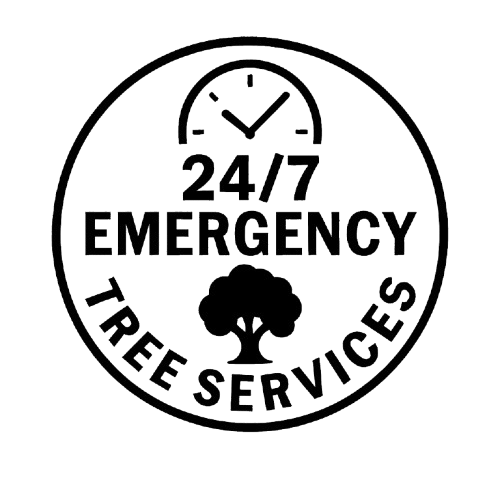Sycamore Tree Emergency Services

Sycamore trees are majestic and often serve as beautiful centerpieces in landscapes, but they can also pose significant risks when affected by storms. With their large limbs and shallow roots, sycamore trees are particularly susceptible to storm damage, making it essential to know how to handle these emergencies. Whether it’s a fallen branch or a tree threatening your property, understanding the process of storm damage assessment and hazardous tree removal is critical. Moving swiftly and enlisting the help of professionals can safeguard your safety and prevent additional damage to your house. Key Takeaways: Safety First: Always prioritize safety by avoiding storm-damaged sycamore trees, especially near power lines or structures. Professional tree services should handle the removal to prevent accidents. Timely Action is Crucial: Sycamore trees injured by storms require prompt repair to prevent further damage to your property. Acting quickly ensures the tree doesn’t become a more significant hazard. Professional Arborists are Essential: Hazardous tree removal is complex and dangerous. Professional arborists have the equipment to assess and remove storm-damaged trees safely, ensuring the safety of your property and family. Understanding Sycamore Trees Characteristics of Sycamore Trees Sycamore trees (Platanus occidentalis) are known for their impressive size and broad canopies. They are a striking presence in any landscape with a canopy that may stretch up to 70 feet in width and up to 100 feet in height. Another distinctive feature is their bark, which peels off in patches to reveal a mottled, white, and gray trunk. While sycamores add beauty and shade, their size and fast growth can lead to several common issues, such as weak wood, heavy limbs, and disease susceptibility. Why Sycamores Are Prone to Storm Damage Large limbs: Sycamore tree’s thick, expansive branches can become heavy, especially when weighed down by rain or snow. During strong winds or storms, these limbs are prone to breaking. Shallow root systems: Sycamore trees often develop shallow root systems despite their height. These roots may not provide enough stability during storms, causing the tree to lean or uproot under high winds. Fast growth: While fast-growing trees like sycamores are desirable for providing quick shade, this rapid growth often results in weaker wood. Damage is more likely to occur during a storm when weak branches break more frequently. Common Types of Damage Sycamore Trees Sustain During Storms Broken limbs: Heavy branches can snap under the pressure of strong winds or ice accumulation, posing an immediate danger to nearby structures or vehicles. Cracked or split trunks: High winds can cause significant stress on the trunk, leading to cracks or splits and compromising the tree’s stability. Uprooting: Sycamores are more likely to be uprooted due to shallow roots, especially in saturated soils after heavy rains. Uprooted trees can fall on homes, roads, or power lines, creating hazardous conditions. Fallen debris: Smaller branches and twigs often litter the ground after a storm, adding to the cleanup effort and indicating potentially more significant issues with the tree’s health. Assessing Tree Damage After a Storm Signs of Storm Damage in Sycamore Trees After a storm, it’s essential to carefully assess any damage to sycamore trees to prevent further risks. Here are the key signs to look for: Cracked limbs: Look for branches that are split or hanging, as they pose an immediate risk of falling. Due to the size and weight of the branches, cracked limbs are hazardous in giant sycamores. Leaning trees: If a sycamore has shifted or begun leaning after a storm, it indicates that its root system may be compromised. Even slight leaning can lead to tree collapse, particularly during future storms. Exposed roots: A common issue with sycamore trees due to their shallow root systems, exposed or uplifted roots indicate that the tree’s foundation is weak. If roots are visible above the ground or dislodged, the tree is at a greater risk of falling. How to Determine if a Tree is a Hazard To assess whether your sycamore tree poses a significant risk after a storm, consider the following factors: Proximity to buildings: If the damaged tree is close to your home, garage, or any other structure, it’s a potential hazard. Falling branches or a collapsed tree can cause severe property damage. Proximity to power lines: Sycamore trees near power lines are hazardous. If any branches are leaning against or close to electrical lines, the situation requires immediate professional intervention due to the risk of electrocution or fire. Proximity to roads or pathways: A tree leaning toward a road or walkway can be hazardous to passing vehicles and pedestrians. Any tree that obstructs movement or threatens safety needs urgent attention. When to Call an Emergency Tree Service Versus Handling Minor Issues Yourself Call an emergency tree service if you notice large, cracked limbs, a leaning tree, exposed roots, or proximity to power lines. Any situation involving major damage or significant hazards requires professional intervention to remove the tree safely. Handle minor issues when dealing with small branches or fallen twigs. You can safely remove light debris and trim small, accessible branches, provided they do not pose an immediate danger. However, avoid attempting to remove larger branches or cut down trees without proper equipment and expertise. Steps to Take Immediately After a Storm Safety Precautions Stay away from fallen limbs: Fallen or hanging branches can still be dangerous and may continue to break or fall. Wait for an expert to evaluate the damage before approaching any damaged trees. Check for downed power lines: If any part of the tree touches or is near power lines, stay clear and contact your utility company immediately. Do not attempt to approach or handle the situation yourself. Documentation Photographing the damage for insurance purposes: Before any cleanup or removal, take clear, detailed photographs of the tree damage. Documenting the scene helps support any insurance claims you may need to file for storm-related property damage. Capture close-up shots of broken limbs, exposed roots, and damage to nearby structures. Temporary Solutions Bracing branches: For limbs that are not severely




